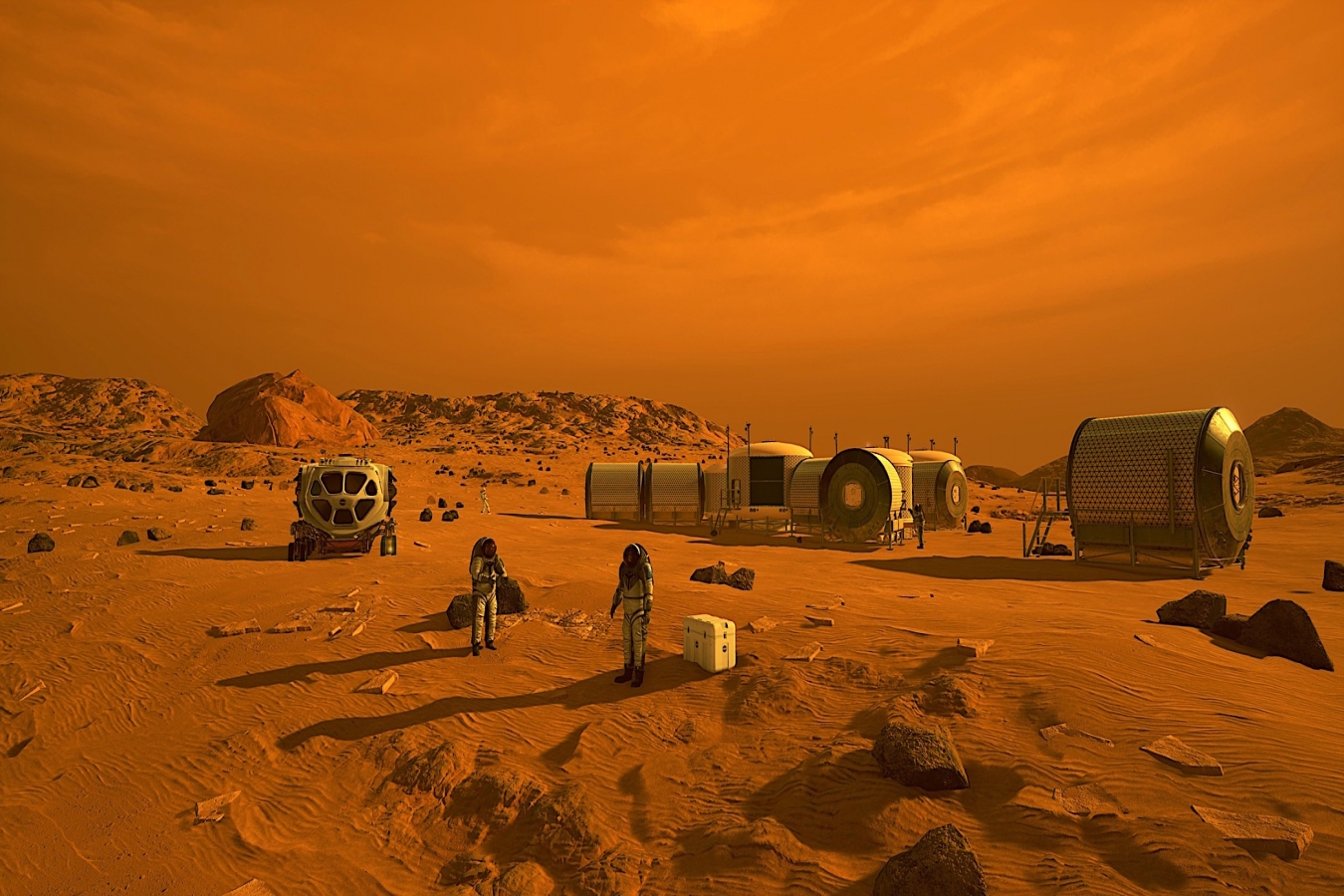


 4:54:3
4:54:3  2019-08-06
2019-08-06  1004
1004

NASA's latest robotic mission to the Red Planet, the Mars 2020 rover which has an armada of imaging capabilities from wide-angle landscape cameras to narrow-angle high-resolution zoom lens cameras, underwent an "eye" examination after several cameras were installed on it, the US space agency said.
"We completed the machine-vision calibration of the forward-facing cameras on the rover," Justin Maki, Chief Engineer for Imaging and the Imaging Scientist for Mars 2020 at NASA's Jet Propulsion Laboratory in Pasadena, California, said in a statement on Monday.
"This measurement is critical for accurate stereo vision, which is an important capability of the vehicle," Maki said.
To perform the calibration, the 2020 rover team imaged target boards featuring grids of dots placed at distances ranging from 1 to 44 yards (1 to 40 metres) away.
The target boards were used to confirm that the cameras meet the project's requirements for resolution and geometric accuracy.
The cameras tested included two Navcams, four Hazcams, the SuperCam and the two Mastcam-Z cameras.
"We tested every camera on the front of the rover chassis and also those mounted on the mast," said Maki.
"Characterising the geometric alignment of all these imagers is important for driving the vehicle on Mars, operating the robotic arm and accurately targeting the rover's laser," Maki added.
In the coming weeks, the imagers on the back of the rover body and on the turret at the end of the rover's arm will undergo similar calibration, NASA said.
The goal of the Mars 2020 rover is to look for signs of ancient life. It will be the first spacecraft to collect samples of the Martian surface, caching them in tubes that could be returned to Earth on a future mission.
NASA intends to use Mars 2020 and other missions, including to the Moon, to prepare for human exploration of the Red Planet.
The agency intends to establish a sustained human presence in and around the Moon by 2028 through NASA's Artemis lunar exploration plans.
NASA is also inviting people to submit their names to travel to Mars with the agency's 2020 mission and obtain a souvenir boarding pass to the Red Planet.
When it is launched in July 2020, the spacecraft will carry the latest scientific and engineering tools.
Reality Of Islam |
|

Researchers

A new chip-

A large inf

Choosing th
 9:3:43
9:3:43
 2018-11-05
2018-11-05
10 benefits of Marriage in Islam
 7:5:22
7:5:22
 2019-04-08
2019-04-08
benefits of reciting surat yunus, hud &
 9:45:7
9:45:7
 2018-12-24
2018-12-24
advantages & disadvantages of divorce
 11:35:12
11:35:12
 2018-06-10
2018-06-10
 6:0:51
6:0:51
 2018-10-16
2018-10-16
 7:45:39
7:45:39
 2018-06-21
2018-06-21
 8:25:12
8:25:12
 2022-03-09
2022-03-09
 8:39:51
8:39:51
 2022-09-23
2022-09-23
 2:42:26
2:42:26
 2023-02-02
2023-02-02
 3:18:29
3:18:29
 2022-12-24
2022-12-24
 7:0:55
7:0:55
 2022-05-17
2022-05-17
 3:43:50
3:43:50
 2022-11-05
2022-11-05
 5:41:46
5:41:46
 2023-03-18
2023-03-18
| LATEST |